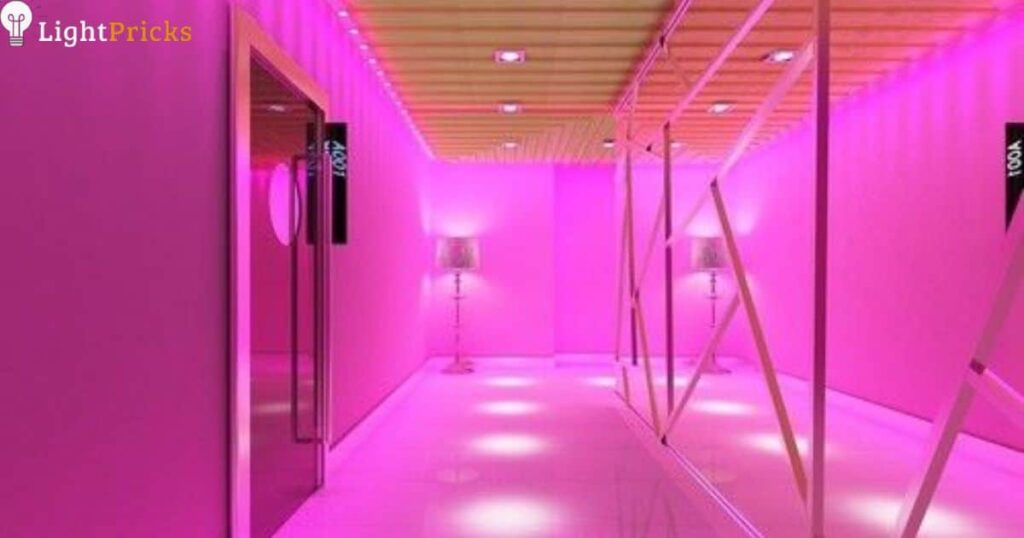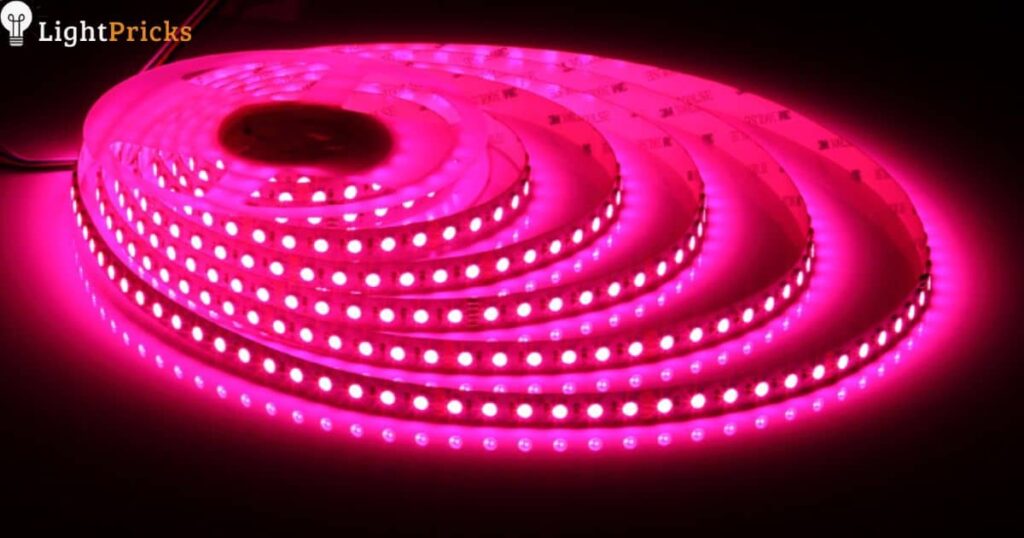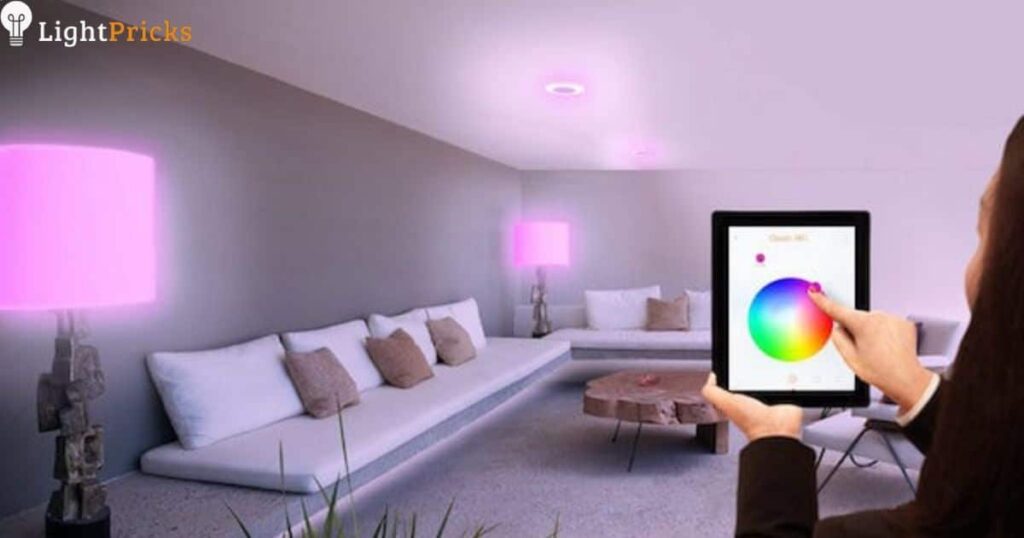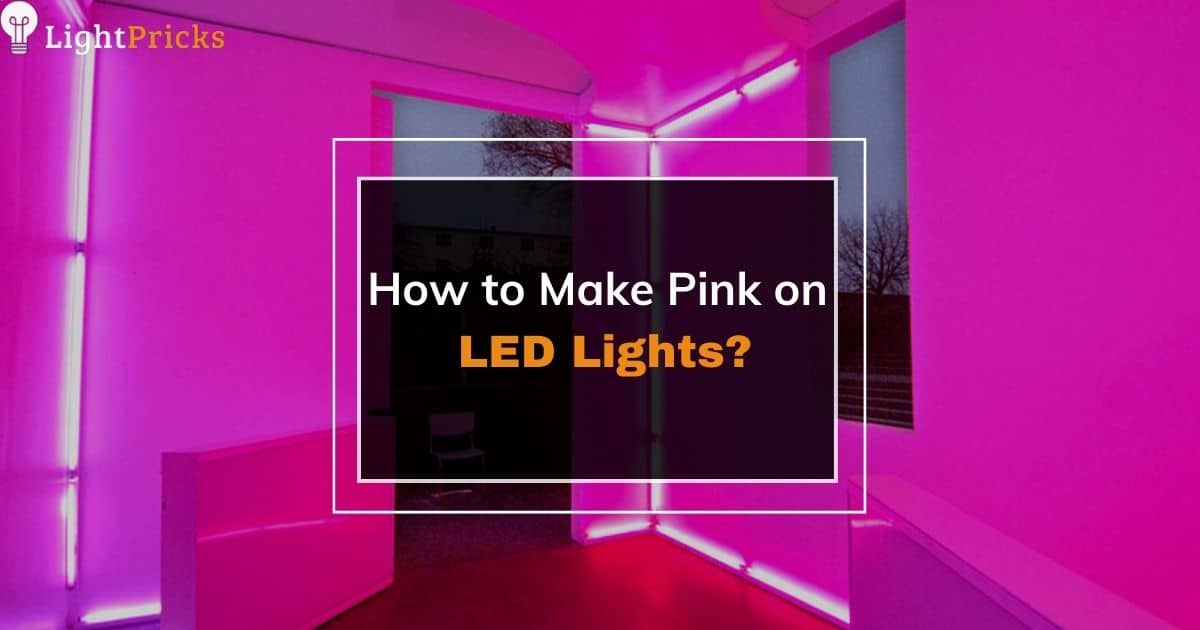Pink LED lighting can create instant energy and atmosphere for any space. But traditional incandescent bulbs can’t easily make accurate or vibrant pink tones. LED technology now allows anyone to produce perfect customizable pink light. Mixing red and white lighting elements allows full control over pink mood lighting design.
With the right RGBW and single color LED hardware components and adjustable controllers, you can dial in and save stunning pink effects. Follow a few wire connection fundamentals between quality LED strips, power supply, and dimming controls and watch your environment transform with your special pink flair.
Whether matching a product display, creating a glowing accent wall, or infusing brightness into a party, it’s simple to achieve bright, flashy pink or subtle blush with specialized LEDs and straightforward wiring. Read on to learn insider tips on crafting beautiful, vibrant pink lighting with easy LED installation techniques for eye-catching results.
How do I make my LED Lights Bright Pink?

Making LED lights into a bright, vibrant pink is simple. Just follow these clear steps for bold pink LED lighting in any space.
Use Bright Red LEDs: Start with a high output red LED light bulb or strip. Brighter reds make bolder pinks. Choose at least 600-900 lumens for bright impact.
Add White for Pink Tones: Mix medium brightness white light alongside the high power red LEDs. White balances red wavelengths for soft or bright pinks instead of deep reds.
Bump Up the Red More: For maximum vivid pinks, pump up the red LED voltage even higher. Keep white light lower than the Reds. This lets the red overwhelm the white for hot pink light.
Use RGBW LED Products: Look for LEDs with RGBW controls. Boost red high while lowering the blue and green channels. Add measured white output. RGBW makes consistent customized pinks.
Place Lights Together: Install red and white LED strips or bulbs near each other. Overlapping light mixes color cleanly. Alternating individual red and white LEDs also blends nicely.
Tune Till You Find Your Pink: Test different voltage levels on red and white elements. Dial in values to emit the pink LED brightness and hue you love for charm and energy.
With high powered red LEDs balanced with white and precise RGBW controls, you can easily being vibrant hot pink vibes to your space.
Essential Tools for Creating Pink LED Lights
- RGB or RGBW LED Lights Choose full color mixing LED bulbs, strips or panels to control pink custom shades.
- 12V Power Supply Quality, adequate wattage power supply keeps LEDs shining bright pink.
- LED Controller Controls color mixing. Can be a dimmer box, remote control, Arduino or Raspberry Pi.
- Mounting Accessories Hardware to install LED strips or bulbs neatly – clips, tracks, covers and more.
- Wiring Copper wiring with insulation to handle 12V DC power requirements.
- Wire Strippers Removes insulation so wiring connects properly to power supply and LED lights.
- Electrical Tape Wraps connections to prevent shorts that can burn out LEDs.
With essentials like full color RGBW LEDs, clean power and smart controls, making vivid pink light displays is fun and easy.
Using RGBW LEDs to Creating Pink Color

Wiring and Controlling
Like RGB LEDs, RGBW LED strips and bulbs have all four LED elements — red, green, blue and white – fused together in one housing so the light blends easily. RGBW setups include a controller to adjust output voltages to each element separately, controlling brightness and color mixing.
Controllers range from physical dimmer boxes to programmable microcontrollers paired with software like Arduino, or RF wireless color remote controls. This allows for adjusting the pink color produced dynamically. Power is simply wired in parallel to the different colored LED modules from the controller.
Creating the Right Color Pink
The process of making pink with RGBW LED lights involves increasing voltage to the red LEDs significantly until a bright magenta is made by the red and blue mix. Lower the blue contribution until it’s more of a pink than purple. Add in white LED brightness to reach lighter or softer pinks. Reduce the green LED output as needed to perfect the pink instead of violet tones.
Once you program or dial in the voltages to get the pink LED light hue desired, those controller settings can be saved for easy consistency in future use. Now you can bathe any room or object in your custom pink LED glow.
Mixing Single Color LEDs
Another way to make pink with LED lights is by mixing standard single color red and white LED bulbs or strips. Aligning and blending the outputs creates a simple pink effect without more complex RGB controls.
Red and White Placement
The spacing and placement of the separate red and white single color LED strips or bulbs makes a difference in the final light quality. Some options in placement include:
- Alternating individual red and white LEDs in a row
- Installing red and white in parallel rows or grids
- Lining perimeter with white, filling center with red LEDs
- Grouping red and white LED bars linearly end-to-end
Closer proximity and overlap blends the colors more seamlessly while further separation shows the individual elements more distinctly. The balance impacts whether you see more pure pink or red-highlighted white.
Varying Brightness
As when mixing RGBW LEDs, altering the relative brightness between the red and white LED components changes the pink color tone and vibrancy. Some control options include:
- Separately wired red and white with dimmable drivers
- Independent red and white zones controlled with automation systems like Arduino or Raspberry Pi
- Manually switched low/medium/high power settings
For the pinkest pink, power the red LEDs brighter than the white to overcome the white light brightness our eyes naturally perceive more. Test combinations to find what works best for your installation needs.
How to Make Pink on LED Lights With Remote?

Remotes make adjusting LED light colors like pink easy. Just follow these straightforward steps.
Buy RGBW LED Kits With Remote: Many LED strip kits include small RF remotes to change colors wirelessly.
Power on LED Lights: Connect LED strips or bulbs to 12V power supply and switch on to activate.
Sync Remote: Press color wheel or on button on RF remote to sync it to receivers in LED lights.
Boost Red and White: Use a remote to turn up red and white levels higher to make bright pinks.
Reduce Green and Blue: Lower green and blue outputs on the remote so pink emerges from the mix.
Make Your Own Pink Custom Shade: Keep adjusting individual color levels until your favorite pink pops out.
Save New Pink Setting: Program that customizes pink into remote’s memory to reuse again instantly.
With easy wireless remote controls, any beginner can tune professional pink tones into their LED installation quickly.
Why do my Lights look Pink?
Sometimes LED lights turn unwanted pink instead of white. This happens for a few reasons you can often fix.
Too Much Red Wavelength: Whites need a blue tint to balance warm reds. If red overpowers blue in the LED elements, it makes pink looking light.
Failed Blue LEDs: Blue LEDs can fail faster than red or greens in cheap LED products. Missing blue allows too much red and green for pink hues.
Bad Batch of Whites: Low quality white LEDs might emit towards magenta parts of the spectrum, appearing pinkish rather than clean white.
Overlapping Red Light Nearby: Nearby red lighting from an additional source can tint white bulbs pink. Notice what other lighting spills onto problem area.
Fix with Higher Blue and White: Balance back with brighter cool white 6000K LEDs or add standalone blue lighting to override excessive red wavelengths causing pink issues.
With the right lighting adjustments, you can shift bad pinks back to pleasing bright white and customize intersections of both for perfect pink accents.
Safety Measures When Creating Pink LED Lights

Making pink LED lighting is safe if simple precautions are followed:
Use Quality Power Supply: Overloaded adaptors can overheat. Use adequate wattage power supply.
Secure Connections: Make tight wiring connections with no exposed copper to prevent shorts.
Consider Heat Dissipation: LEDs and power systems create heat. Allow proper ventilation.
Use Warning Signs: Label high voltage areas like power supplies to avoid risks.
Monitor Fixtures: Check for hot spots that indicate overdriven circuits. Act promptly.
Isolate Strips: Add weather protection and electrical insulation to LED strips when installing outdoors.
With quality LED gear and attentive wiring, making pink lighting displays is easy and hazard-free.
Frequently Asked Questions
Can LED lights be pink?
Yes, LED lights can produce pink light. By mixing colors like red and white, or using RGBW controls, LEDs create customizable pink lighting.
How do you change the color of LED lights?
To change LED light color, use a remote control, controller dial, or RGBW programming interface to alter the brightness levels of the red, green, blue and white LED elements to create new colors.
Is pink light good for sleep?
No, pink light is not ideal for sleep. Warm amber or reddish light is better. Pink wavelength stimulation can disrupt healthy circadian rhythms and melatonin release needed for deep sleep.
Conclusion
Making pink LED lighting for any function or decor is simple with the right LED bulb or strip setup. Use built-in red, green and blue emissions mixed through RGB or RGBW LED controller programming. Or combine adjustable separate red and white lighting elements wired in parallel. Aligning all LEDs and tuning controller settings or dimming levels blends the colors into clean, bold pinks. With the right LED lighting components and adjustable controls, enjoy custom designing pink vibes for any space.













